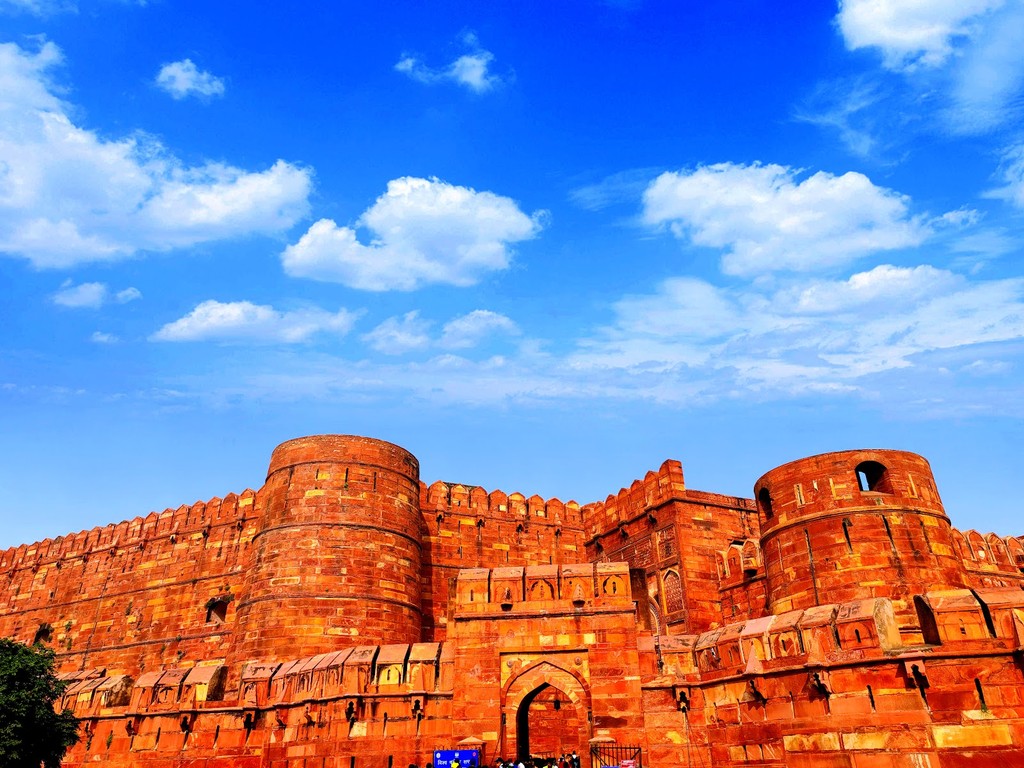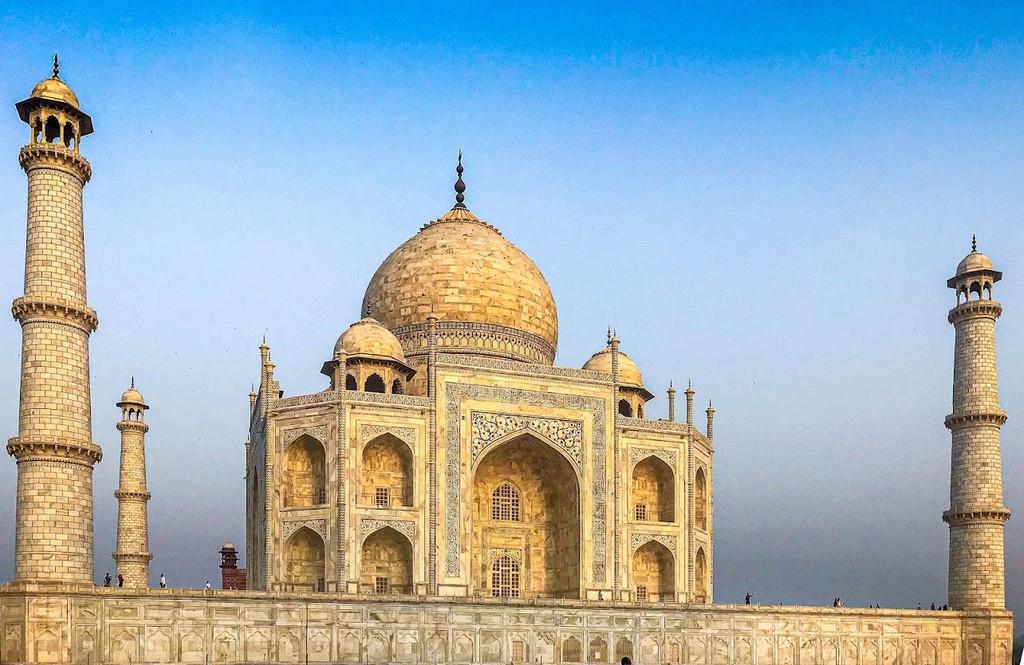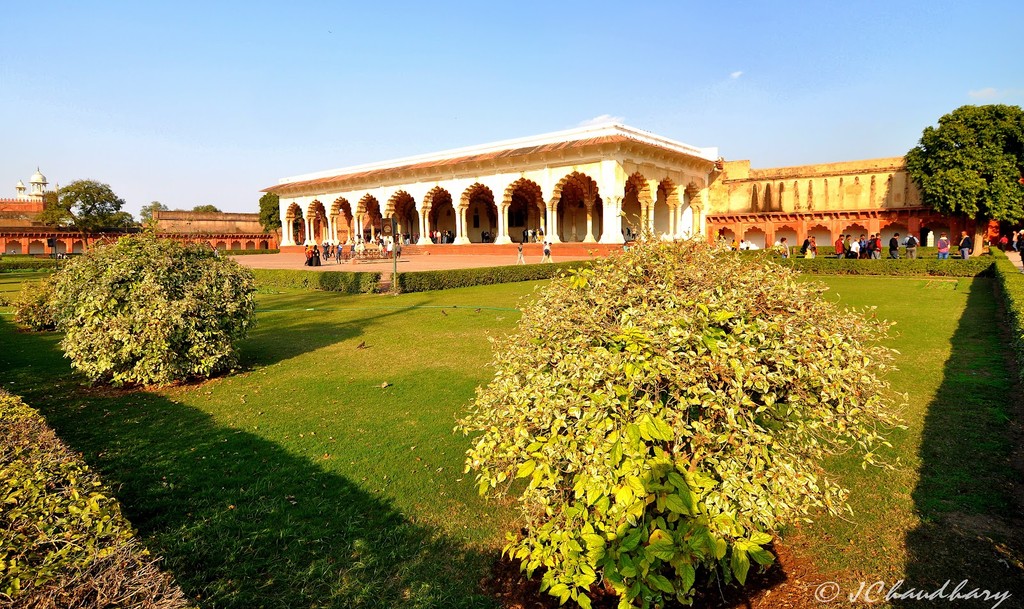Majestic Agra: A Journey Through Time
Embark on a free walking tour through Agra's majestic landmarks, where each step reveals the rich history and architectural marvels of India's Mughal heritage.
Time
3 Hours
Stops
4 Places
Distance
4.5 km
Agra Fort
Begin your journey at the Agra Fort, a UNESCO World Heritage site, which served as the main residence of the Mughal emperors and offers a glimpse into the grandeur of Mughal architecture and history.

Agra Fort (Source: Google Maps)
Agra Fort, a UNESCO World Heritage site, was constructed in the 16th century and served as the main residence of the Mughal emperors. This massive red sandstone fortification showcases a blend of Indian and Islamic architecture, featuring intricate carvings and expansive courtyards. The fort's formidable walls and bastions were designed for defense, while its palatial interiors reflect the opulence of the Mughal era. Key structures within the fort include the Jahangir Mahal, Diwan-i-Am, and the impressive Musamman Burj, where Emperor Shah Jahan was imprisoned by his son. Agra Fort is not only a symbol of Mughal power but also a testament to the artistic and architectural achievements of the time.
Taj Mahal
A short walk from the Agra Fort, the Taj Mahal stands as the epitome of love and architectural beauty, drawing visitors from around the world to marvel at its pristine white marble structure and lush gardens.

Taj Mahal (Source: Google Maps)
The Taj Mahal, an iconic symbol of love, was commissioned by Emperor Shah Jahan in memory of his wife Mumtaz Mahal. This UNESCO World Heritage site, completed in 1653, is renowned for its stunning white marble façade, which changes color with the light of day. The intricate inlay work of semi-precious stones, known as pietra dura, adorns the structure, showcasing the exceptional craftsmanship of Mughal artisans. Set within sprawling gardens that reflect the Persian-style charbagh layout, the Taj Mahal harmonizes nature and architecture. The central dome rises to 35 meters and is flanked by four minarets, which are slightly tilted outward to create an optical illusion of perfection. The Taj Mahal continues to attract millions of visitors globally, symbolizing eternal love and architectural brilliance.
Jahangir Mahal
Located within Agra Fort, the Jahangir Mahal is a stunning example of Mughal architecture and was the principal zenana (palace for royal women), showcasing intricate carvings and a blend of Indian and Central Asian architectural styles.
Jahangir Mahal (Source: Google Maps)
Jahangir Mahal, located within Agra Fort, is a remarkable example of Mughal architecture built during the reign of Emperor Akbar in the late 16th century. This palace served as the zenana, or women's quarters, and is characterized by its stunning intricate carvings and a unique blend of Indian and Central Asian architectural styles. The Mahal's design features a series of courtyards and gardens, providing a serene environment for the royal women. The use of red sandstone and marble in its construction, along with ornate jali work, reflects the artistic sensibilities of the time. Jahangir Mahal also offers panoramic views of the fort's surroundings and the Yamuna River, making it a significant cultural and historical site that highlights the grandeur of the Mughal dynasty.
Diwan-i-Am
Also within Agra Fort, the Diwan-i-Am, or Hall of Public Audience, highlights the Mughal emperor's practice of meeting with the public to hear their grievances and administer justice.

Diwan-i-Am (Source: Google Maps)
The Diwan-i-Am, or Hall of Public Audience, is another significant structure within Agra Fort that showcases the administrative practices of the Mughal emperors. Built during the reign of Shah Jahan, this hall was where the emperor would meet with the general public to listen to their grievances and dispense justice. The architecture features a large open space with intricately carved pillars and a high ceiling, allowing for light and air to circulate freely. The Diwan-i-Am is adorned with beautiful marble inlay work, reflecting the opulence of the Mughal court. This hall not only served as a venue for public hearings but also played a role in the ceremonial aspects of the Mughal administration. Its historical significance lies in its function as a bridge between the emperor and his subjects, embodying the principles of justice and governance in the Mughal era.

Your travels, your rules.
Create your own Free Walking Tours.
Set your preferences, distances and anything you want to do or see.
Completely free, no payment required.